
Salivating Over Salvias

I remember years ago when I was interviewing for a job at a public garden, I was caught off guard by a question I did not prepare for: "What’s your favorite plant?" (and of course with the clarifier, “excluding roses!”). Well dang. “That’s a good question!”, I responded, trying to buy myself some time. It’s almost a cruel question to ask a horticulturist such a thing. You wouldn’t ask a parent who his or her favorite child is! Thinking fast (or rather slow, as I think I’ve made that painfully obvious), I exclaimed “Salvia!”
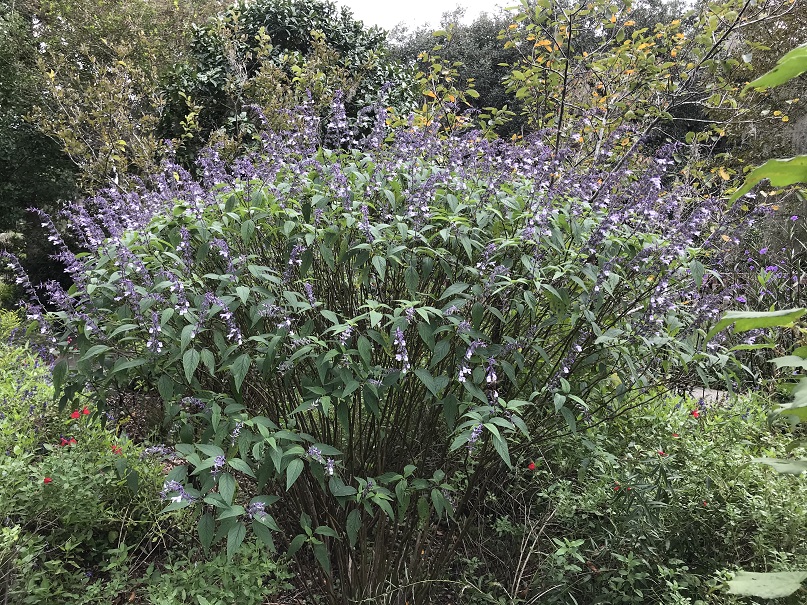
As you can imagine, the follow up to that was “Why?”. Well, in my feverish thinking, I had figured out a why: the genus Salvia (sages) is so varied and different, you have so many to choose from and it’s hard to believe they’re all related! Thankfully, that was a satisfactory answer and I could move on to some easier questions like oh, what are three (3!) of your weaknesses. Yikes.
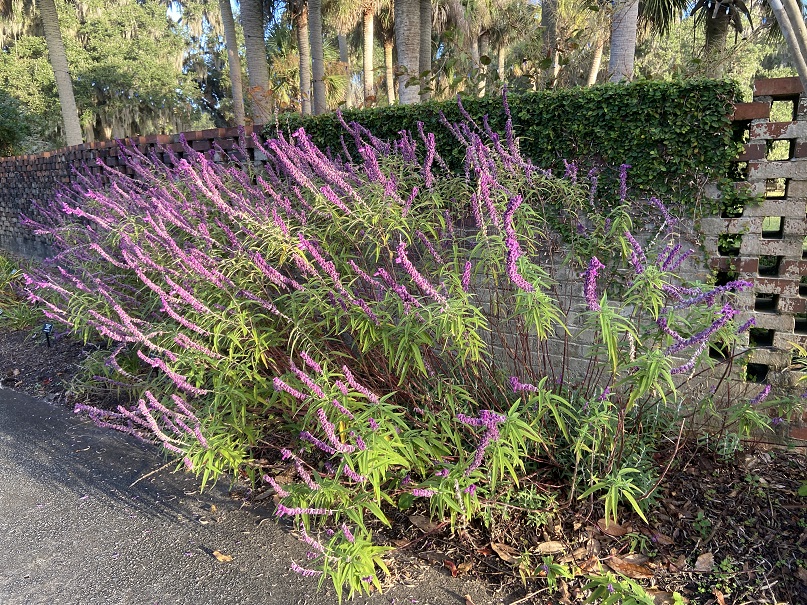
Horrors of job interviews aside, the genus Salvia carries a lot of plants under its hefty umbrella.
Having more years under my belt in the horticulture field since that interview, I am delighted to have met many more Salvia that continue to make me shake my head and say “That’s a Salvia?!”. For that reason, I wanted to share a sampling of some so you can see just how diverse this genus, or grouping, of plants is.
Let’s start with Salvia ‘Maraschino’. This is what I think of when I think of a sage. Colorful flowers that seem to bloom nonstop and look like lips pursed to give a kiss! Its size and light needs are typically what I think of too: a relatively short plant of about two feet tall that grows in full sun.
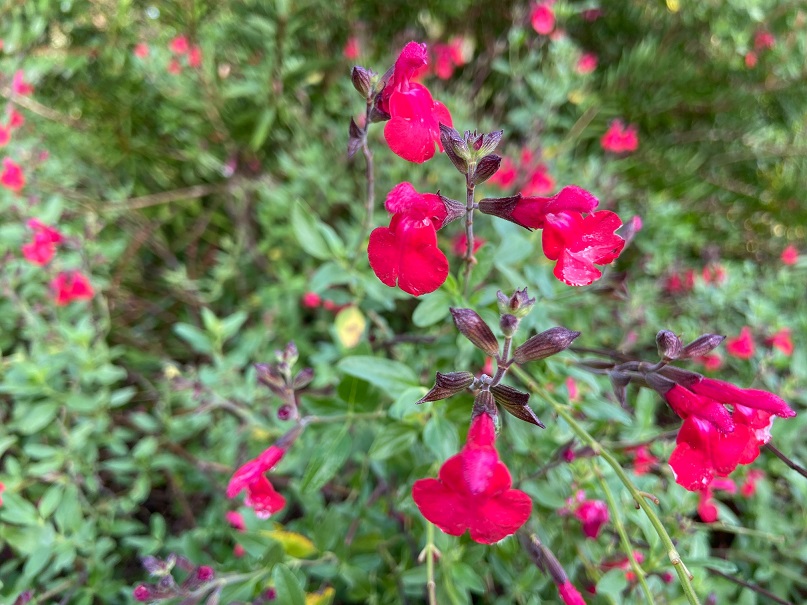
Similar to ‘Maraschino’ is Salvia microphylla ‘Hot Lips’. The flower and overall habit, or shape, of the plant bear a close resemblance, with a noticeable difference being the flower color. ‘Hot Lips’, while having an attractive red and white color to its flowers, pictured below, is not always guaranteed to have that coloration. In fact, it is quite common to see plants with all white, all red, white and red, or a mix of all of those flowers on it. Talk about keeping it interesting!
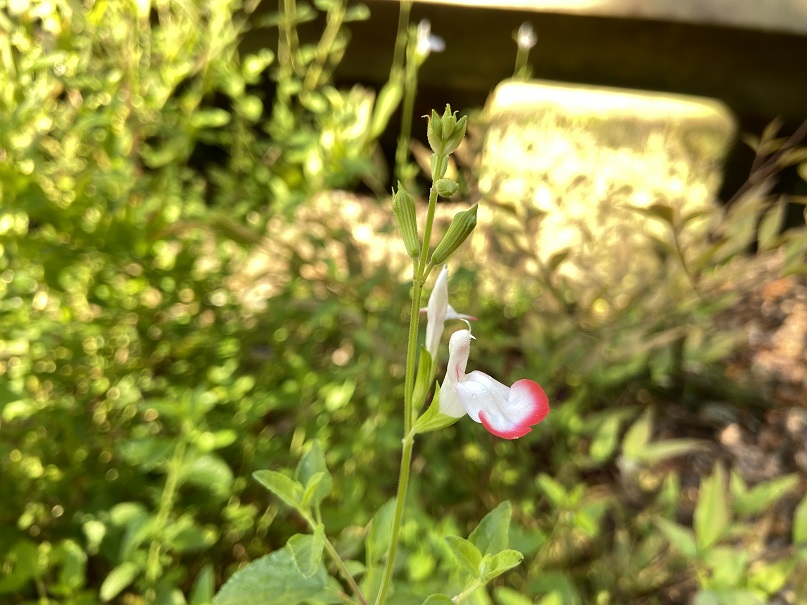
I know I’m no stranger to pointing out that plants are attractive and worth noting for more than just their flowers. That being said, I’m human, and like most people, I also tend to hone in on the flowers! That’s why our next Salvia selection is Salvia uliginosa (bog sage). Like ‘Maraschino’ and ‘Hot Lips’, it's got the kissy face flower, just in a different color - this time blue and white. I’ll say that again blue and white. Why the emphasis on the blue? It’s fairly uncommon to find true blue flowers in nature, so when you see one, it’s worth taking note! This sky blue beauty is a lovely plant, but can be a bit aggressive, as it spreads readily, and grows to about four or five feet tall, making it a little cumbersome if not planted in a well planned space.
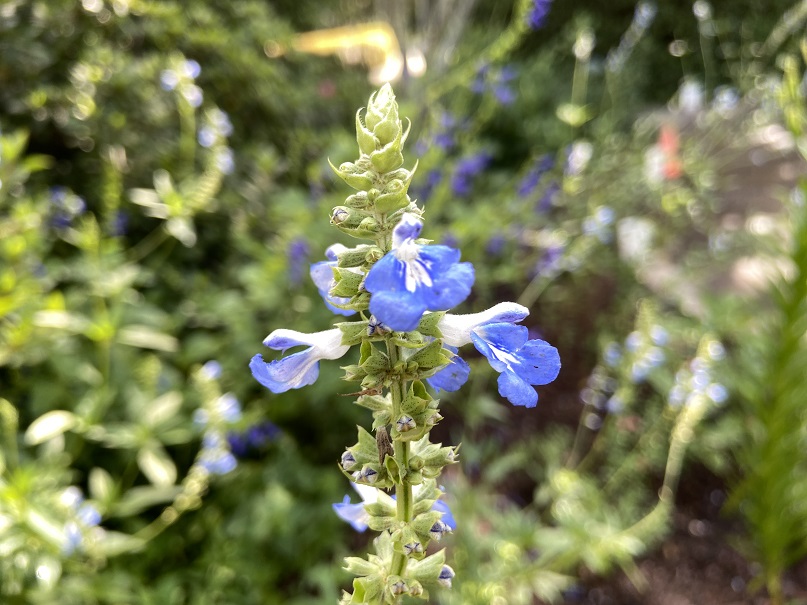
The next place my mind takes me when I think of sages is to plants with tubular flowers like Salvia ‘Amistad’. Tubular flowers are not uncommon to see either. This purple flowered sage grows somewhat large, at around three to four feet tall. It certainly has a presence.
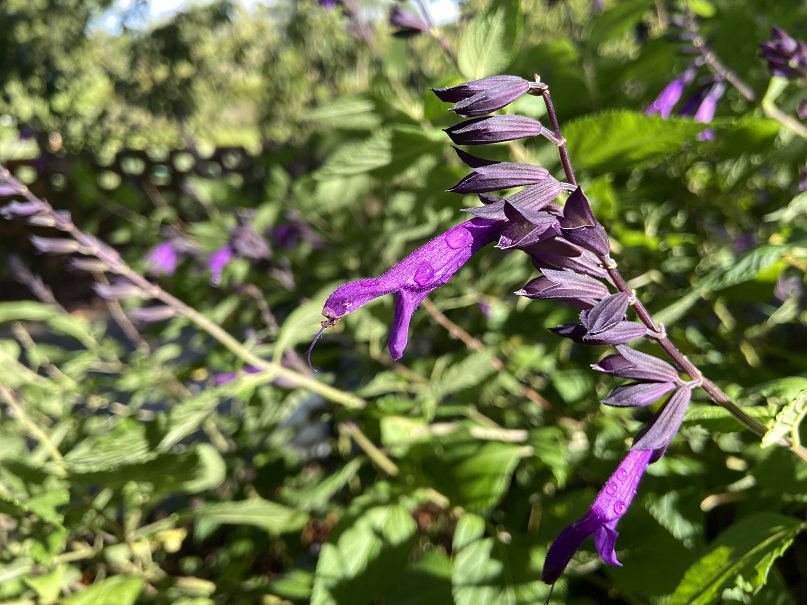
Salvia elegans 'Golden Delicious' (pineapple sage) is another sage with tubular flowers, but this time the flowers are red. As the common name may lead you to believe, this sage smells like pineapples when the foliage is rubbed. However, this particular cultivar, or cultivated variety, ‘Golden Delicious’ derives its name from the yellow color of its leaves.
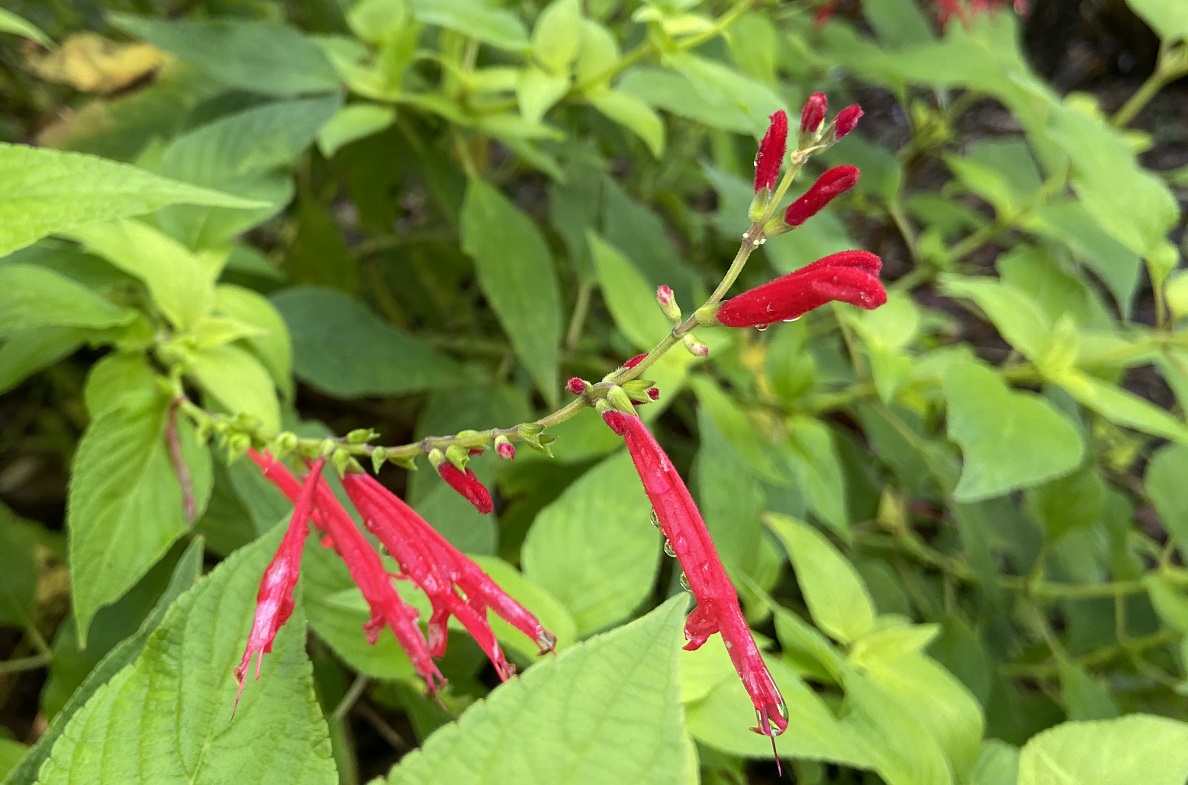
Continuing our trend of tubular flowers is Salvia koyamae (yellow sage). As the name implies, the flowers on this sage are yellow. What makes this even more unique is that this Salvia, unlike many other types, is actually grown in partial shade to full shade! So, if you have a shady yard - you can still grow Salvia!
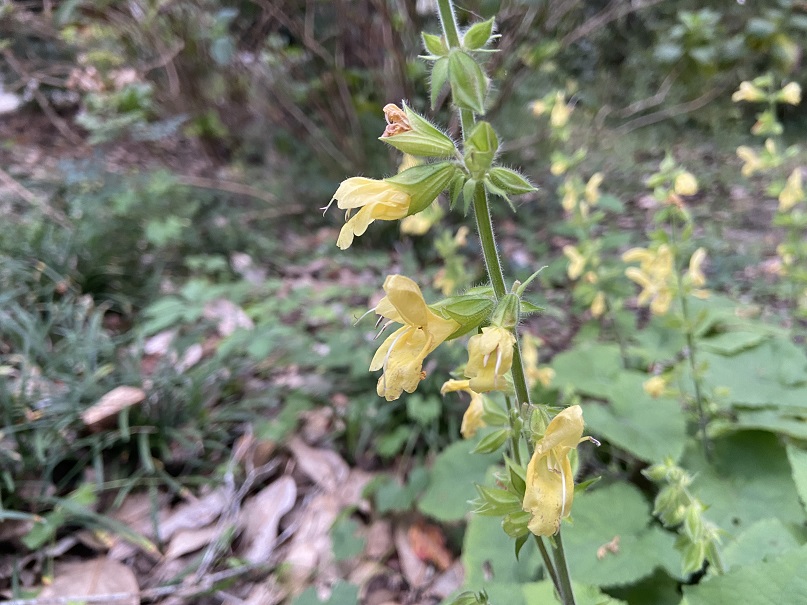
We’ve focused a lot on flower shape but I’m excited to draw your attention elsewhere: to flower texture! Some sages have flowers that are velvety or hairy and therefore turn the unique factor up a considerable notch. Salvia leucantha 'All Purple' (Mexican bush sage) just so happens to be one of those sages. It is a gorgeous sight to behold in the autumn when these showy spikes of purple, fuzzy flowers emerge (as seen in the third image in this post!). It’s a welcome garden addition during a time when we are transitioning out our warm season plantings to our cool season ones.
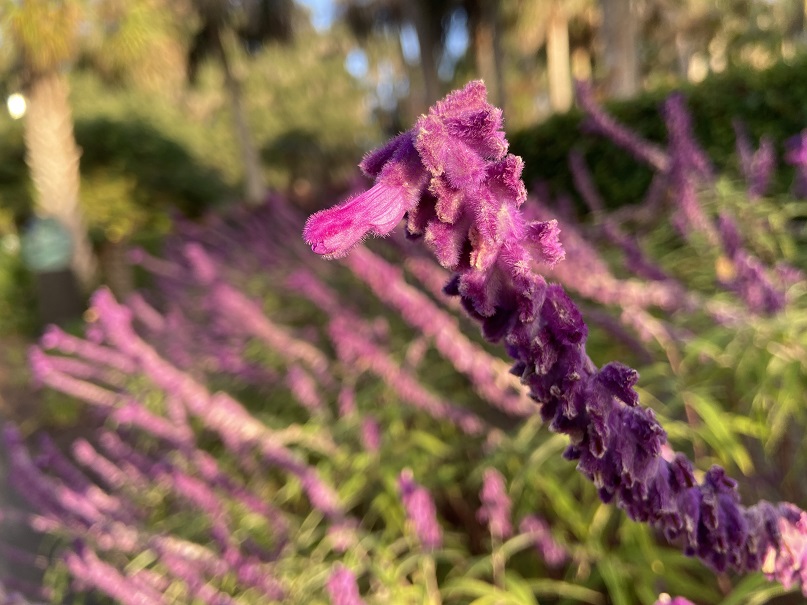
I adore this next plant! Salvia ‘Waverly’ is simply amazing. Its fuzzy flowers with a mix of white and cool purple on dark stems contrast perfectly and are held above a pedestal of green foliage. The color palette I find so pleasing, and the softness of the plant is great. I like it so much, I even put its picture twice; the first time as the second image in this post, and of course a close up of the flowers, below!
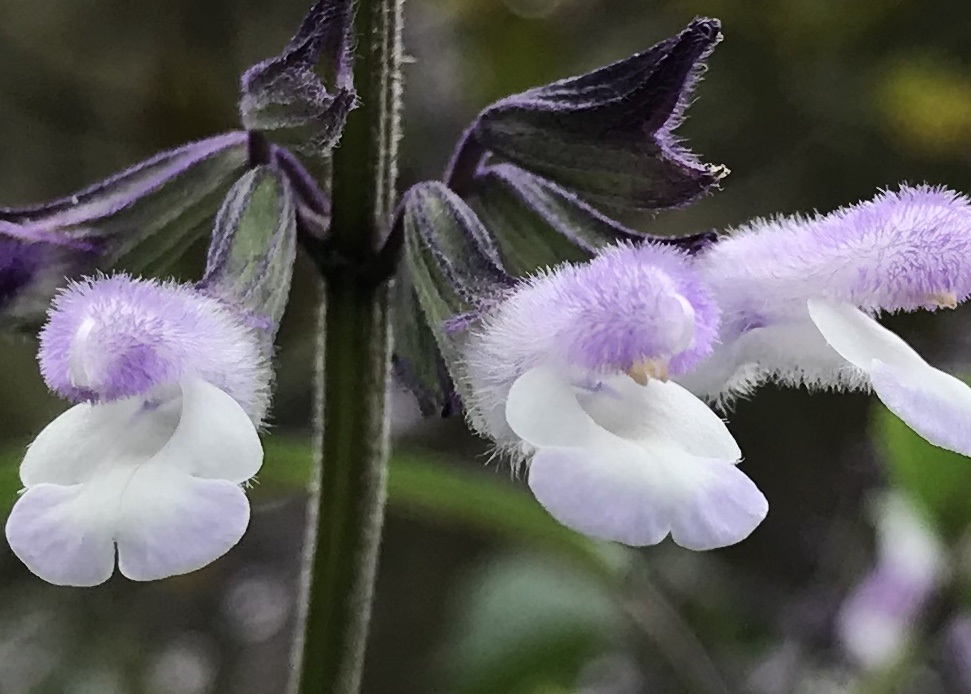
This post has been heavily floral, I know (heck, I even called myself out on it up top!) In order to not show flower bias, I have also included a picture of four different Salvia foliage types, just to further drive home the fact that sages are so incredibly different. Some leaves are almost heart shaped, while others appear oval, some appear somewhat linear, and yet others appear rounded - and that’s just scratching the surface! It’s incredible how many plants can all fall into the same genus, which brings me to my final Salvia…
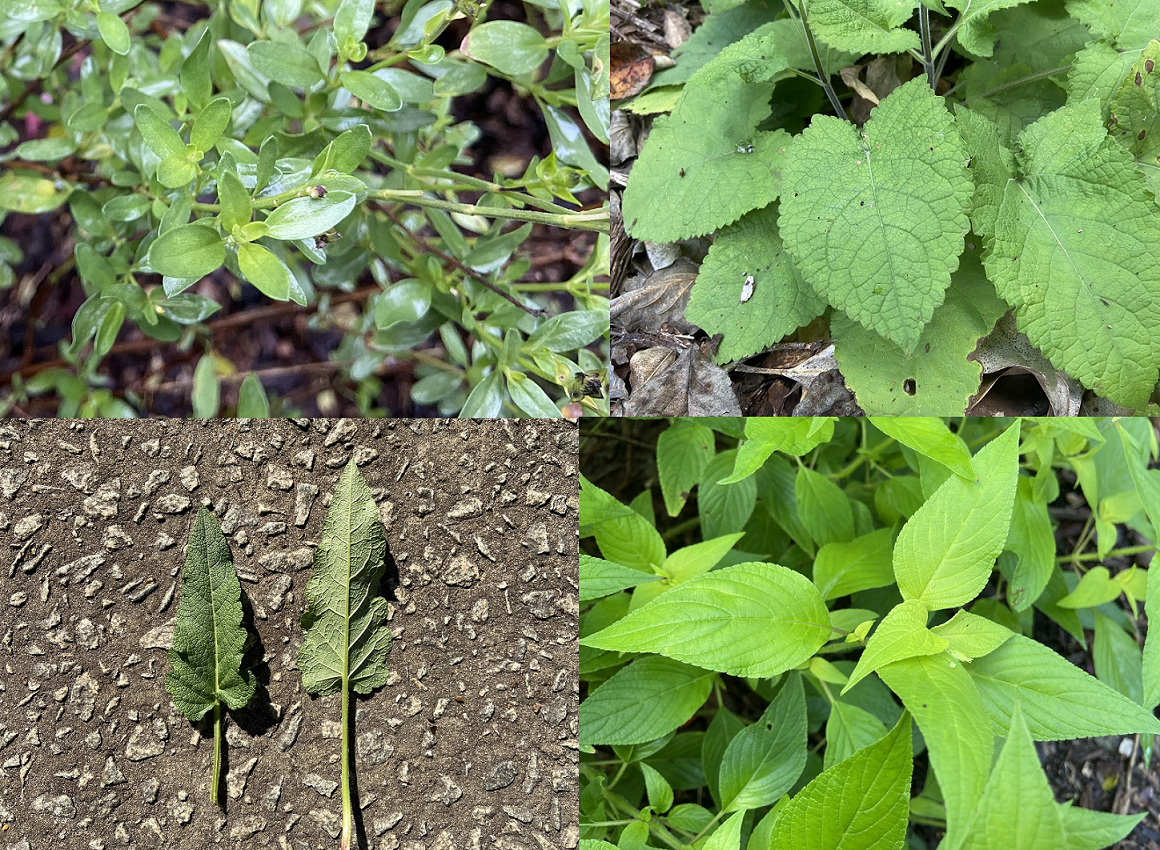
Salvia rosmarinus. Also known as rosemary. Previously known as Rosmarinus officinalis. For the plant nerds out there, this one is like pulling the mask off of the villain in Scooby Doo (please hold your “Zoinks!” for the end, thank you). This is the plant reclassification that shook so many of us plant nerds to our dorky cores. Rosemary… A Salvia?! When I found this out about a year ago, I ran around like a loon to anyone in the Horticulture Department that would listen (bless them, they’re all so polite) to ask if they heard the news, like it was some hot gossip. My shock and awe (and maybe disappointment?) aside, rosemary is indeed a Salvia too (until the plant deities change it back again, maybe, who knows?).
The genus Salvia is a large category of plants. It’s incredible to see the variety that exists in flowers, foliage, colors, shapes, sizes, textures, and cultural conditions! The next time you come to visit us at Brookgreen Gardens, be sure to keep an eye out for the various sages in our collection. Until then, you can search for “Salvia” on our Plant Records Database to take a preemptive peek!
See you in the gardens!
(Zoinks!)
Hours
Hours: Monday & Tuesday 9:30 AM - 5:00 PM
Wednesday - Sunday 4:00 PM - 9:00 PM
For daytime admission, gates close at 4:30 PM. For their safety and the safety of our animal collection, pets are not allowed, nor can they be left in vehicles inside Brookgreen. Service animals that have received special training to assist disabled persons are welcome.
Tickets
Daily General Admission Tickets for 7 consecutive days
Children 3 and under: Free
Children 4-12: $14
Adults 13-64: $25
Seniors 65 & Over: $23
Location
1931 Brookgreen Drive
Murrells Inlet, SC 29576
Off US Highway 17 Bypass, between Murrells Inlet and Pawleys Island on South Carolina's Hammock Coast
843-235-6000
GOOGLE DIRECTIONS